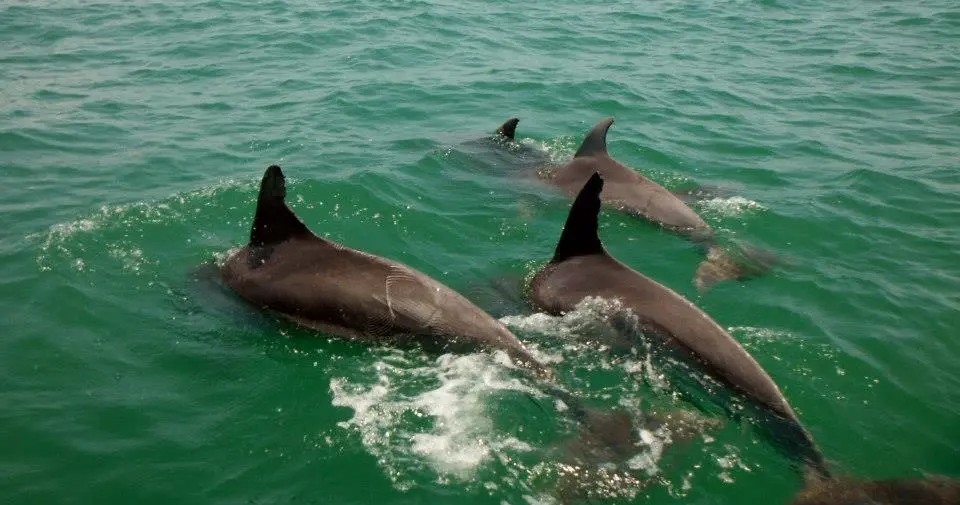Embarking on a dolphin watching adventure promises a unique blend of excitement and serene beauty. Whether you’re an avid marine life enthusiast or seeking a memorable family outing, knowing the optimal time for dolphin watching can significantly enhance your experience. Let’s dive into the seasons and factors that influence dolphin visibility, offering tips and insights for planning your perfect aquatic adventure.

Understanding Dolphin Migration Patterns
Dolphins are not only fascinating creatures but also highly migratory, moving between different habitats throughout the year. Their migration is largely influenced by the search for food and the need for suitable breeding areas. Understanding these patterns can help pinpoint the best times for dolphin watching, as their presence in coastal areas often corresponds with these migratory habits.
The migration of dolphins is not random but follows a predictable pattern that varies depending on the species. For instance, some species may migrate towards warmer waters during colder months, making them more visible in certain destinations during these times. Recognizing these patterns can offer a clue into the optimal seasons for observation and provide a richer, more informed dolphin watching experience.
The Best Seasons for Dolphin Watching Around the World
Globally, the best time for dolphin watching can vary widely depending on geographical location. For spots near the equator, dolphin sightings can be year-round due to the consistently warm waters that attract a variety of marine life, including dolphins. In contrast, regions with more temperate climates may offer peak dolphin watching experiences during the summer months when both the water and air temperatures are warmer.
In areas like the Caribbean or parts of the South Pacific, where the water remains relatively warm throughout the year, opportunities for dolphin watching can be quite consistent, making it a year-round attraction. However, for enthusiasts looking to witness large groups of dolphins, it’s beneficial to research specific migration events, such as when they travel to breeding sites or follow fish migrations, which can heighten your chances of a memorable sighting.
How Weather Influences Dolphin Activity
Weather plays a significant role in dolphin behavior and their visibility near the coast. Rough seas and colder waters can reduce the likelihood of dolphin sightings, as dolphins may migrate to calmer and warmer waters or dive deeper to find their preferred temperature zones. On the other hand, calm and sunny days with minimal wind often provide the best conditions for dolphin watching, as these creatures enjoy the serene waters and are more likely to surface.
Monthly Guide to Dolphin Watching
While dolphin watching is a year-round activity in some parts of the world, certain months do offer better opportunities than others. In general, late spring through early fall is considered the optimal time for dolphin watching in many locations due to the warmer water temperatures and increased marine activity.
To provide a more specific guide, it’s recommended to consult local marine life organizations or tour operators who can offer insights into the best times for sightings. For example, in Florida, the spring months are often touted for their increased dolphin activity, whereas in Hawaii, the winter months can be ideal due to the migration patterns of marine life in the Pacific.
Top Destinations for Dolphin Watching
Some of the world’s best destinations for dolphin watching include the warm waters of the Hawaiian Islands, where spinner dolphins are frequently seen. Another notable spot is the Florida Keys, offering year-round opportunities to witness bottlenose dolphins. Further afield, the clear waters of New Zealand are home to the acrobatic dusky dolphins, particularly around the South Island.
For those willing to venture to cooler climates, Scotland’s Moray Firth is home to a large population of bottlenose dolphins. Each of these destinations provides a unique setting and opportunity to observe dolphins in their natural habitat, with local tours aimed at conserving and respectfully appreciating marine life.
Expert Tips for a Successful Dolphin Watching Trip
To maximize your dolphin watching experience, it’s advisable to choose tours that respect wildlife regulations and prioritize the well-being of the dolphins. Early morning or late afternoon are often the best times of day to go dolphin watching, as the water is calmer and dolphins are more actively feeding. Additionally, bringing binoculars and a camera with a good zoom can help capture these unforgettable moments from a distance, ensuring that you maintain a respectful relationship with these majestic creatures.
It’s also important to maintain realistic expectations. While sightings can often be guaranteed by experienced tour operators, remember that dolphins are wild animals with their schedules and behaviors. Patience and respect for their natural environment will not only increase your chances of a sighting but also ensure a more enjoyable and ethical experience.
Understanding the Best Times of Day for Dolphin Sightings
Dawn and dusk are often touted as the magical hours for dolphin watching. During these times, the ocean is usually at its calmest, and dolphins are actively hunting for fish. The low angle of the sun also makes the water’s surface less reflective, allowing clearer visibility into the marine world below. These conditions create ideal opportunities for both casual observers and professional photographers to witness dolphins gracefully gliding through the water.
Final Thoughts on Dolphin Watching
In conclusion, the best time of year for dolphin watching largely depends on the specific location you plan to visit. However, generally speaking, warmer months offer higher chances of spotting these magnificent creatures as they tend to follow warmer waters and abundant food sources. Remember to consider the local climate, marine activity, and any travel advisories before planning your trip. With the right timing and a bit of patience, dolphin watching can be an unforgettable experience that brings you closer to the wonders of the marine world.

Leave a Reply